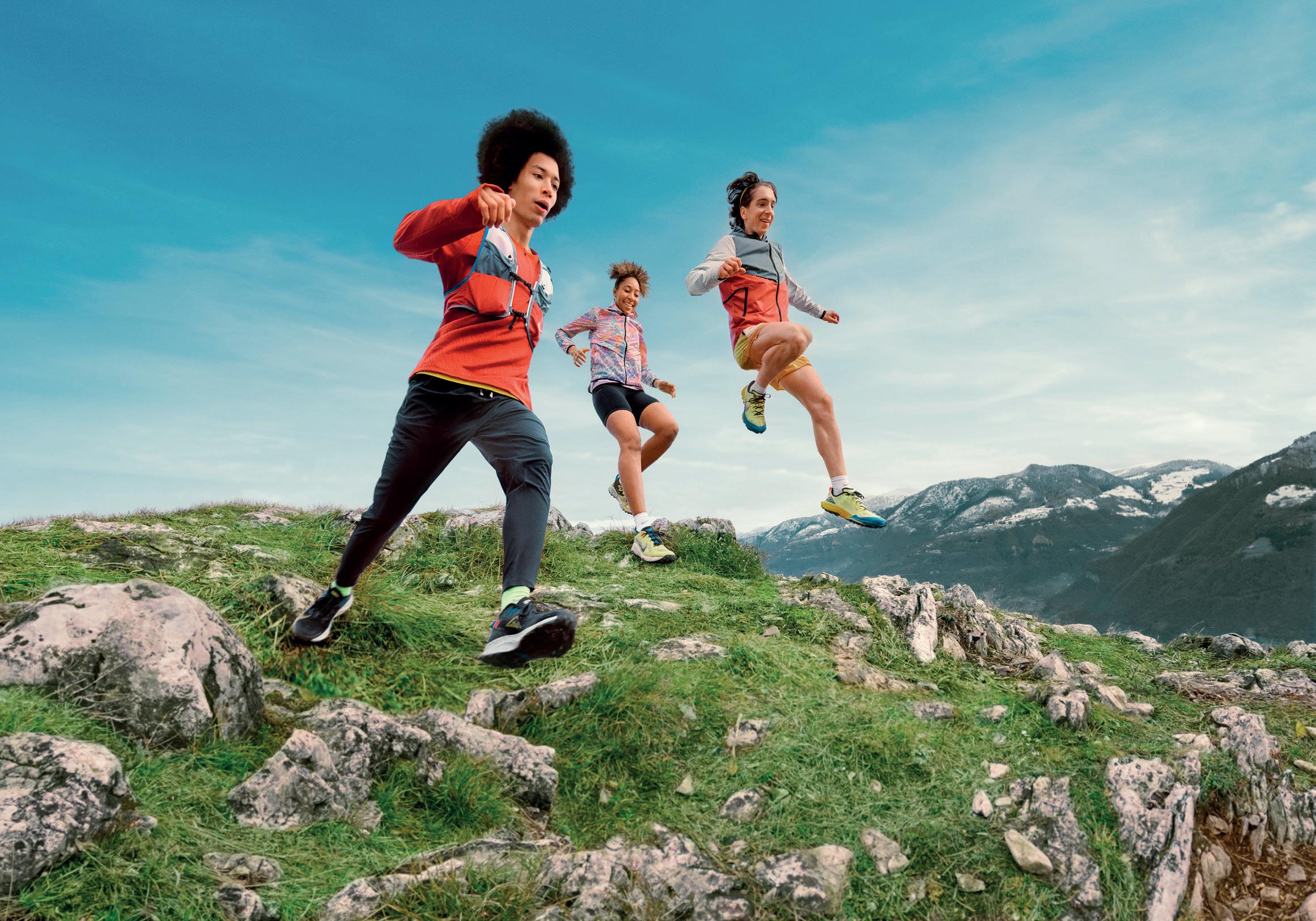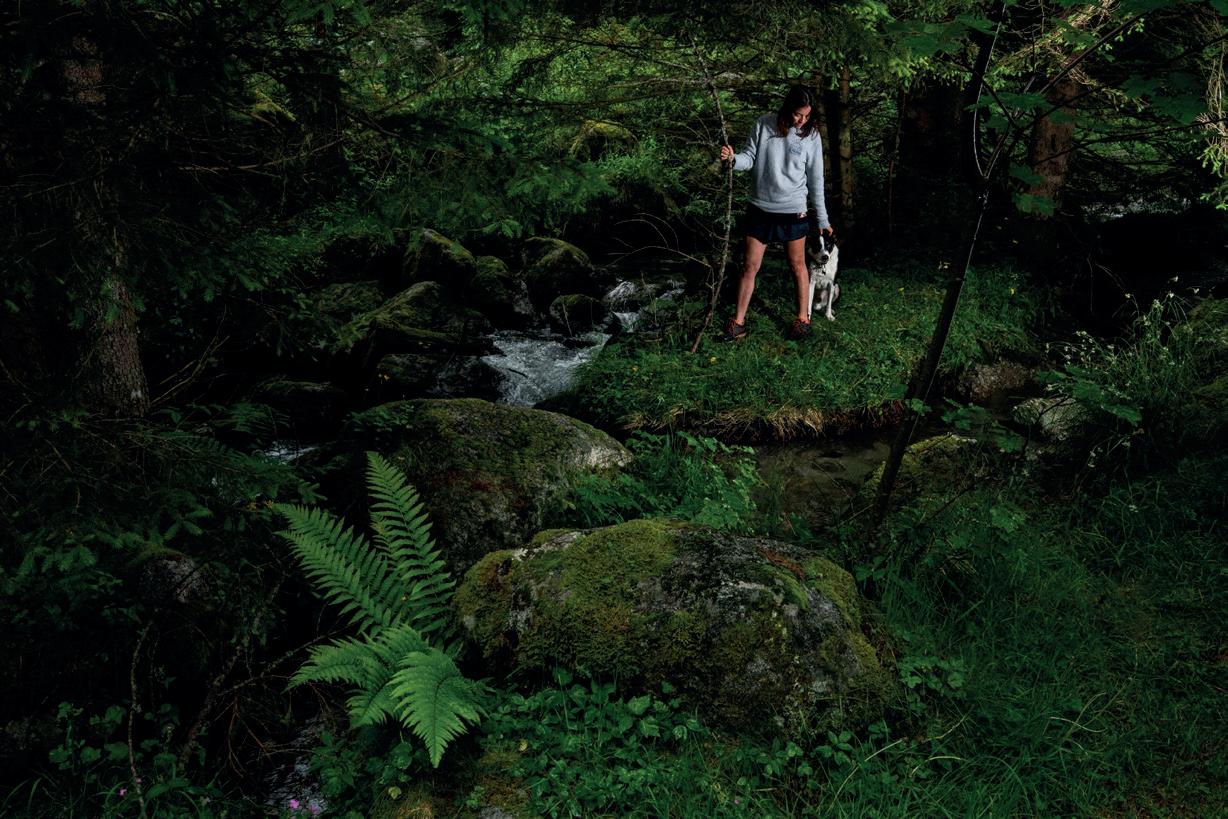Millet 100 years BY M A R TA M A N ZO N I
A family story, a mountain story Millet's story is first of all a family story. In 1921 Marc and Hermance Millet began producing bags and small shoulder bags for the customers of their grocery store in Saint-Fons, near Lyon. The story started here, but soon moved to the foot of the mountains, in Annecy, where the Millets moved due to Marc's precarious health. After his death, the company continued in the hands of his wife: the family had no other means of subsistence and Hermance rolled up her sleeves to carry on her work and give her children a future. In fact, were René and Raymond, her children, who in 1945 took over Millet and turned their gaze to the peaks, beginning to design backpacks for high mountains: Louis Lachenal, a young but promising mountaineer, accompanied them in this challenge. In 1950, together with Maurice Herzog, he was the first to climb Annapurna, the first 8000m peak ever climbed by mankind, on his shoulders, faithful companion of every adventure, there was backpack designed together with the Millet brothers. The success of the company offered great visibility to the brand, and laid the foundations of Millet's far-sighted vision: to invest more in technical innovation and involve other mountaineers in
the design of equipment suitable for new expeditions. A working method made up of great goals and collaborations with extraordinary men was then consolidated. Alongside the Millet brothers, there were René Desmaison, who invented the first harness in 1956, and Walter Bonatti. Despite the international rise of the brand, Millet remains a family story, halfway between craftsmanship and industry. As René's daughter, Françoise Millet, recalls, speaking of her childhood: “I used to work with my brother on refinements during the holidays, we made holes all day long”. Then, in 1962, an accident caused the roof of the company to collapse: there was no question of stopping, the Millet family couldn’t sit idle, and so the sewing machines were brought into the families' apartment in order to keep working. In the 1960s the market opened up to enthusiasts who turned to Millet products for leisure. Marcel Brion, who has worked in the company since the 1950s, recalls: "We produced throughout the year. The biggest client was the Vieux Campeur. Sometimes they would call to ask for two hundred backpacks to be delivered within two days!”. Those were also the years of an important constructive innova-
108
tion: the heavy canvas that initially made up the backpacks, was replaced by a new material, nylon. The revolution began with suspenders, padded with foam, without seams and also in nylon. The emblem of this innovation was the 1964 Sherpa 50 backpack, with removable yellow pockets. The innovations continued, and since 1977 Millet decided to diversify its offer and ventured into the clothing sector, creating the first parka that used a Gore-Tex membrane and other iconic garments, such as the Colorado gilet, in cotton padded with goose down, or the Blizzard and Glacier models, made of jacket and overalls. The following year, Reinhold Messner joined the team of the French company and achieved the first ascent in history to Everest without oxygen, wearing Millet products. An exceptional new success for the brand, which had never stopped accompanying great athletes like Reinhold Messner in their adventures, on Messner’s shoulders there was the iconic yellow backpack with the triangular tricolor flag. "Perhaps this is precisely the engine of mountaineering: like fish in water, birds in the air, chamois on rocks, only the symbiosis with the environment makes a man a good mountaineer" Messner said.

















